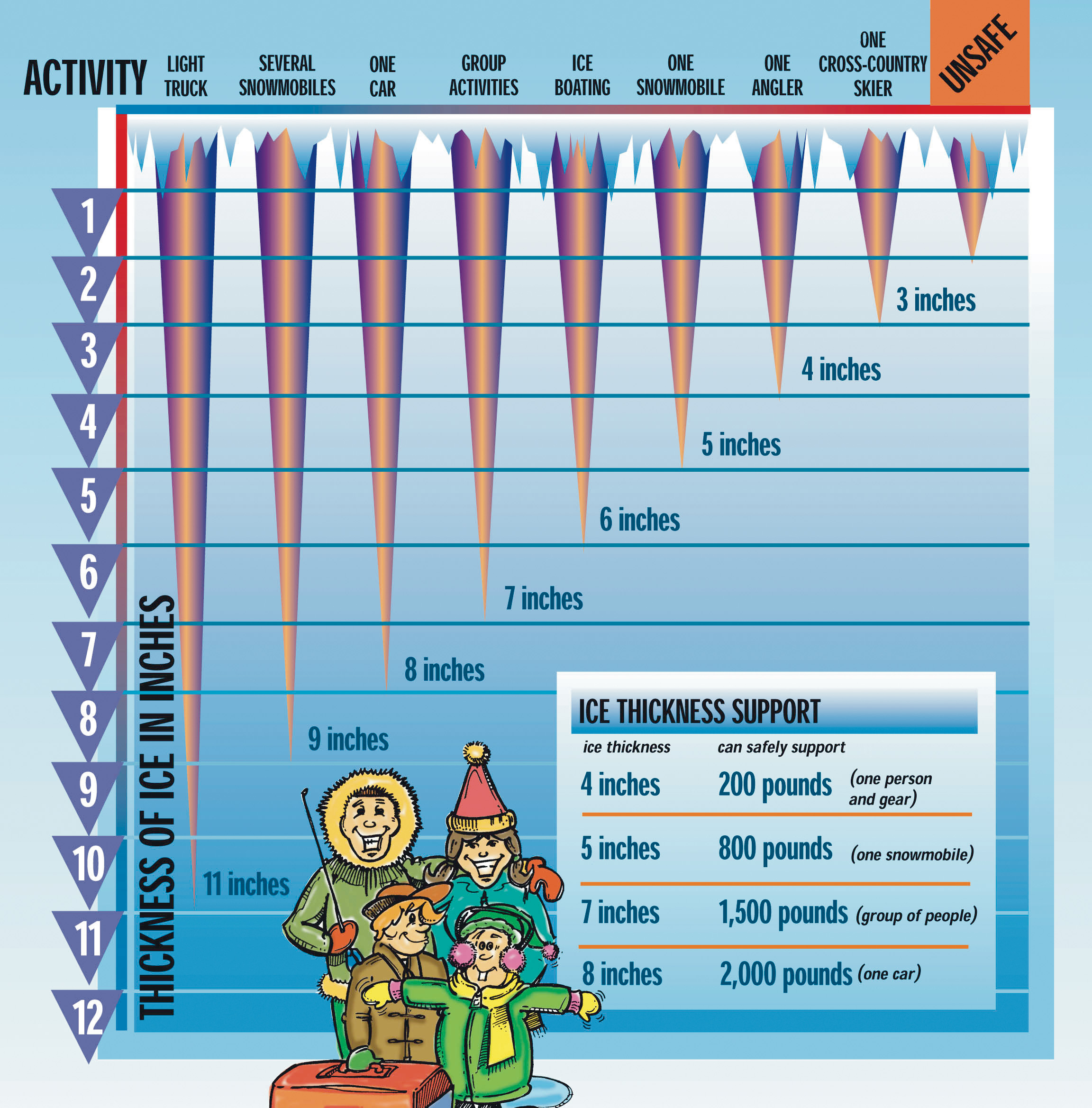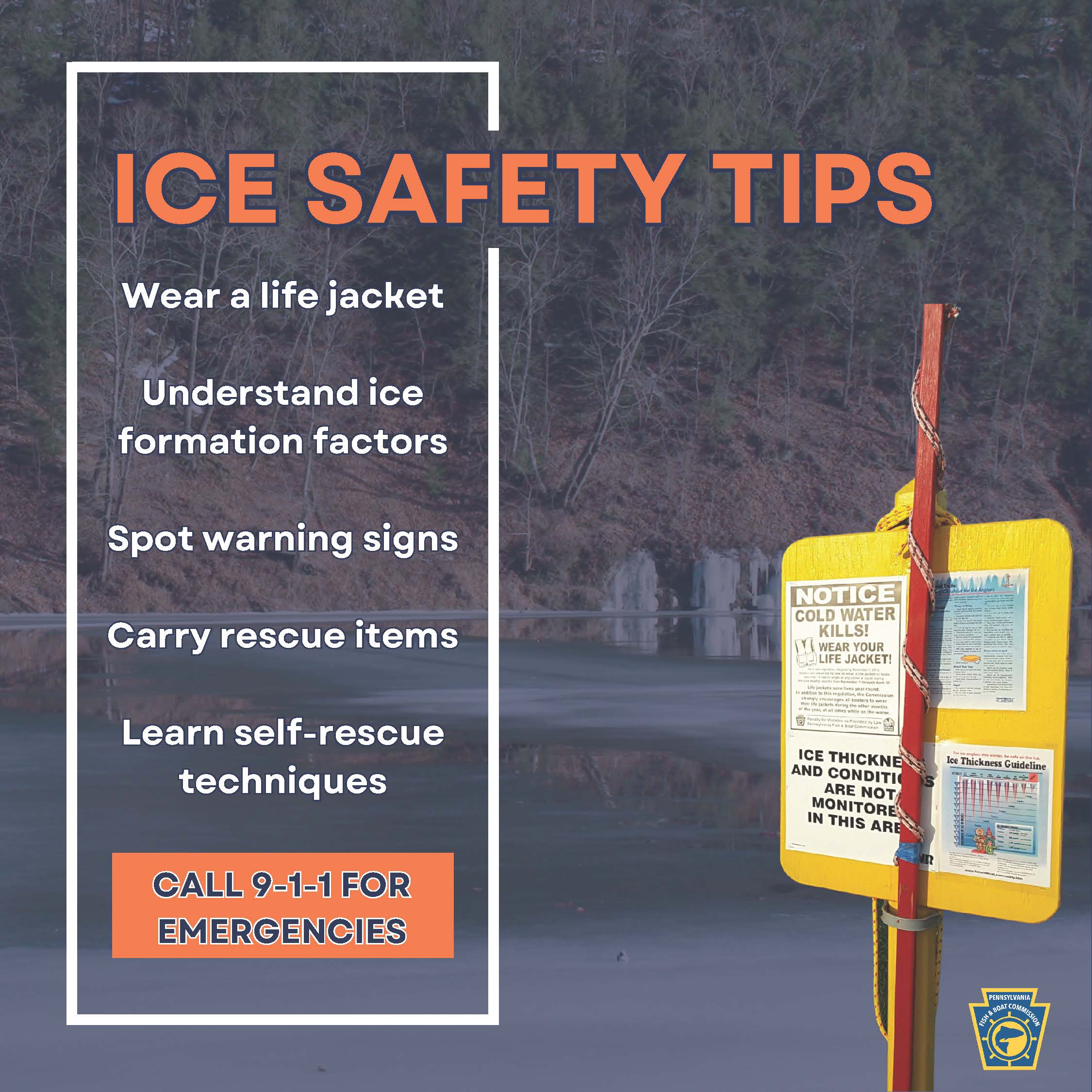ICE / WINTER FISHING
A great place to start is our
Interactive Map of Ice Fishing Destinations.
New to ice fishing? Bring the family and learn ice fishing basics at one of our ice fishing programs seasonally being held throughout Pennsylvania.
View our Calendar to find a nearby program.
Also, check out our Introduction to Ice Fishing video series here.
ICE FISHING TIPS
ICE FISHING TIPS BY SPECIES
ICE FISHING SAFETY TIPS
ICE FORMATION EXPOSED: UNDERSTANDING THE UNPREDICTABILITY OF FROZEN SURFACES
By: Chris A. Calhoun
There is no such thing as “safe ice,” but by gaining a deeper understanding of ice formation, recreaonal users can protect themselves when venturing onto frozen landscapes.

FACTORS THAT INFLUENCE FORMATION AND STRENGTH OF ICE
Temperature plays a key role in ice formation. As the surface water cools, it eventually reaches the freezing point, leading to ice formation. Long periods of colder temperatures facilitate stronger, denser and sturdier ice.
Wind is another influential factor. A gentle wind enhances the cooling process, promoting faster ice formation. However, stronger winds create waves that erode forming ice or break it apart.
Sunlight can slow down or prevent ice formation by warming the water, especially during daylight hours. Limited or absent sunlight will increase ice formation more rapidly.
Moving water, such as rivers or waves, is less likely to freeze compared to still water. The constant flow of water prevents it from reaching the freezing point, resulting in thinner and weaker ice. Solid ice struggles to form due to continuous flexing, moving, and eroding of the ice mantle.
Obstruction or vegetation in the water absorb heat from the sun, slowing down the cooling process and potentially preventing ice formation around and near these objects. These factors lead to thinner ice and reduced strength.
Snowfall during a snowstorm will create porous granular icee. A layer of snow on the ice mantle acts as an insulator, slowing down the freezing process. Accumulated snow on top of ice adds weight, impacting the overall strength and stability of the ice surface. It is important to exercise caution as snow can hide warning signs of weakened ice.
SIGNS OF WEAK AND ROTTING ICE 
- Warmer temperatures cause ice to melt and become thinner, comprosing its structural integrity
- Standing water or slush indicates melting and creates hazardous conditions
- Underground springs or moving water are risky, as the flow of warmer water weakens the ice from underneath.
- Ice near the shore tends to be weaker due to proximity to land, flucuating water temperatures and sunlight reflecting off the bottom.
- Ice formations underneath bridges can be weak due to road salt or other pollution sources
ICE SAFETY RECOMMENDATIONS
Never assume that ice is safe! Check with local authorities or ice safety experts for information on thickness. Use the ice thickness chart and guidelines, as illustrated above, before recreating on icy waterways.
Wear a life jacket, take rescue items (such as a coil rope and ice awls), and know self-rescue skills. If you see an emergency call 9-1-1 immediately and request a water rescue team.
ADDITIONAL INFORMATION